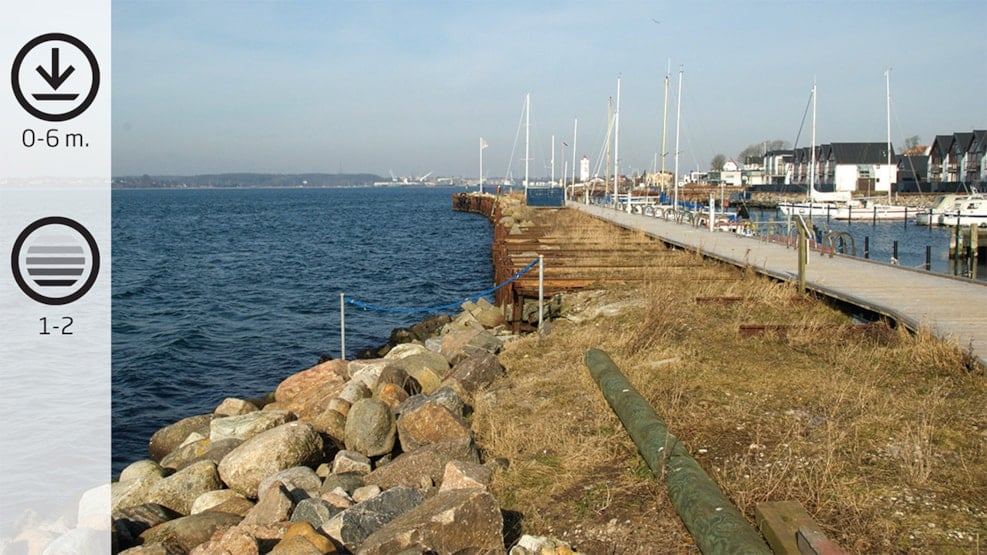
Strib Harbour pier (no. 2)
Exciting stone setting, this is the habitat for some species of seaweed. The stone setting provides shelter and hiding for smaller fish such as pipefish, butterfish, ninespines stickleback and goldsinny. Seals and porpoises might appear.
Facts:
How to find Coming from E20, choose Exit 58. Follow the signs towards Strib at Jyllandsvej, Make a turn at Staurbyskovvej af a few hundred metres. And the end og Staurbyskovvej, turn right at Strandvejen towards Strib. Follow Strandvejen until you reach the marina.
Geocoordinates:
Longitude: 9.7641074676
Latitude: 55.537730949
Google Earth Coordinates:
Latitude: 55°32'15.41"N
Longtitude: 9°45'50.33"Ø
Getting in and up the water: At the platform
Highlights: The stone setting
Air filling station: You can get your airbottle refilled at Hindsgavl Camping in Middelfart (open all year round) during opening times: Hindsgavl Camping. Alternatively ask the local diving club in Middelfart, Tel.: +45 3311 1323 : Dykkerklubben Marsvinet
Best season: All year round
Dangerous areas: Be careful not to get too far in the belt, the tide can be strong.
Depth: 0-6 metres.
Tide: weak
Level of difficulty (1-5): 1-2
Permissions: None
Facilities: Parking space. Toilets, picnic set
Photo opportunities: Wide angle and macro
Strib Havnemole
Some harbour piers can be good dive sites and this is certainly one of them.
Enter the water next to the jetty. It is easy and safe to get in and easy to get up again. You dive at the right of the stones. It is the stone setting which is the most exciting area. As soon as you enter the water and get close to the rocks, there is plenty of life in the shallow water.
You can meet most of the life attached to a reef - even if you are in shallow water most of the time. The dive very beginner friendly, as you can dive under all conditions.
The stone are habitat for some species of seaweed and provides shelter and hiding for smaller fish such as pipefish, butterfish, ninespines stickleback and goldsinny. You can always find the goldsinny here during the summer. It prefer to habitats with rocks and seaweed. As a diver, you can get close to these small reef fish. They each have their own territory and if you rest at a larger rock and feed the fish with a little common mussel, you can get a long time to pass while getting some fun underwater experiences.
Other animals often interfere in the feast. Especially small cod and crabs come out from their hiding. So even if you could call the harbour pier for an artificial reef, it seems like a real reef. Denmark's smallest fish can be seen here: the two-spotted goby, which is a beautiful little fish. Sitting on the rocks is a part of the animals that live by filtering the water for small organisms, including plumose anemones and sea anemones.
If you swim away a bit from the stone setting, you can be meeting sandeel and flatfish such as plaice and flounder on the sand. Additionally, you can be lucky to meet garfish in the spring and by night dive there are good chances to find eel and sea trout.